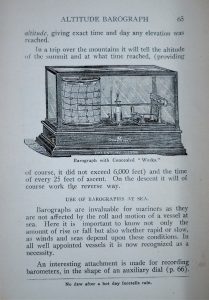By: Pete Inness

Figure 1: Bluebells in a wood near Reading on the 16th of April 2020 (left) and the same date in 2021 (right). In 2021 the flowers are yet to emerge and there are no leaves on the trees.
Bluebells regularly come out top in surveys of Britain’s favourite wildflower. From mid-April to mid-May they form carpets of lilac-coloured and strongly scented flowers in woodlands from Southern England to Scotland. Reading is particularly well placed for seeing these flowers with the beech woods of the Chilterns to the north of Reading being a favoured location for them. In fact, you don’t even need to leave the University campus as there are several good locations for them within a couple of minutes’ walk from the Meteorology Department.
Since I first came to Reading as a student in the late 80’s I’ve tried to get out into the countryside most years to see the bluebells at their best. This involves careful timing. Back in those early days I would have said that the May Day Bank Holiday weekend was the best time to catch them, but in the intervening 30 years that date has moved forward somewhat and I’d now say that going out a week or so earlier than this gives you a better chance of seeing them in their prime.
The main cause of year-to-year variations in the flowering date of bluebells is temperature variability. Whilst, like most woodland flowers, they are primed to get through much of their above-ground life cycle before the leaf canopy gets too thick and cuts down the sunlight reaching the forest floor, flowering can be accelerated or delayed by warmer or colder temperatures through the Spring months.
A few years ago, I decided to turn my interest in bluebells, and the annual cycle of nature in general, into something more productive by running undergraduate projects looking at relationships between weather patterns and the occurrence of events in the natural world. This has been made possible by an excellent citizen science project called Nature’s Calendar which is run jointly by the Centre for Ecology and Hydrology and the Woodland Trust. This project encourages members of the public to report their sightings of a wide range of natural events such as first flowering of flowers and shrubs, first nest building of common birds, or first appearance of certain species of butterfly and other insects. Using the data recorded by this project, together with weather data such as the Met Office’s Central England Temperature record, students can explore relationships between weather and the annual cycle of the natural world and then relate them to specific weather events such as “the Beast from the East” in 2018 or longer-term changes in climate.
These studies by our students have shown that the flowering date of bluebells is sensitive to the average temperature through February and March – the months when the leaves emerge from the ground and the flower stalks and buds form. Every 1 degree Celsius rise in mean temperature across these months leads to bluebells flowering about 5 days earlier. The average temperature in April seems to have very little impact on the flowering date and this makes sense. Because bluebells produce their first flowers in mid-April (earlier in sheltered spots and in the south of the country), the temperature of the remainder of the month is immaterial to the flowering date.
2021 seems to be an exception to that rule. Whilst February 2021 was quite a bit colder than 2020, March 2021 was actually warmer than 2020. The differences in temperature between these 2 years in February and March are nowhere near large enough to explain the difference in the state of the bluebells in the pictures above, both taken on the 16th of April, in 2020 and 2021 respectively. April 2021 has been one of the coolest Aprils in recent years and in Reading has been the frostiest April since 1917. There have been 11 air frosts recorded at our Atmospheric Observatory through the month and only 5 nights in the month when there wasn’t a ground frost. To put these numbers in context, in a typical April in Reading we would expect 2 air frosts.
These frosts effectively slammed the brakes on the flowering process. Bluebells have evolved to avoid exposing the delicate reproductive parts of their flowers to frost and so during the first half of April the flower buds remained closed. Even now, at the start of May, the bluebells in our local area are still some way behind the dense carpets of flowers that we saw in mid-April last year.
So, this year’s project students will be studying the effect of these exceptional frosts on UK wildlife and looking for their impacts on other plants, trees, birds and insects.



 Figure 1:
Figure 1:  Figure 2:
Figure 2:  Figure 3: The Pacific and Atlantic Oceans
Figure 3: The Pacific and Atlantic Oceans Figure 4:
Figure 4: 















